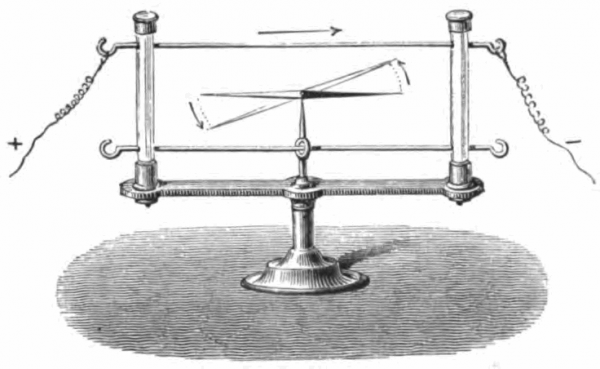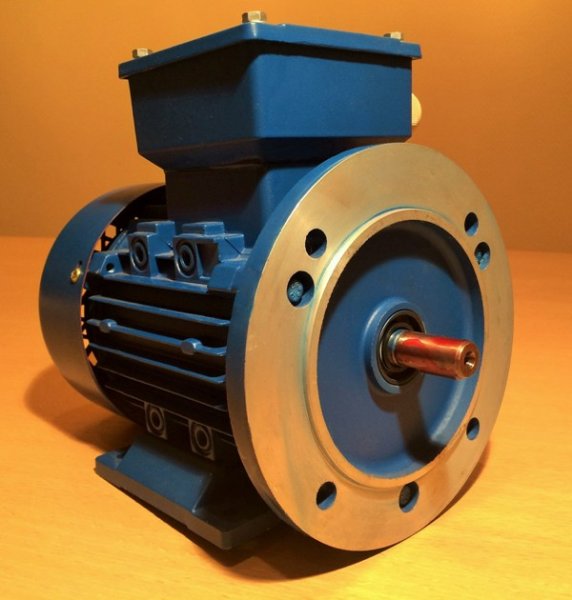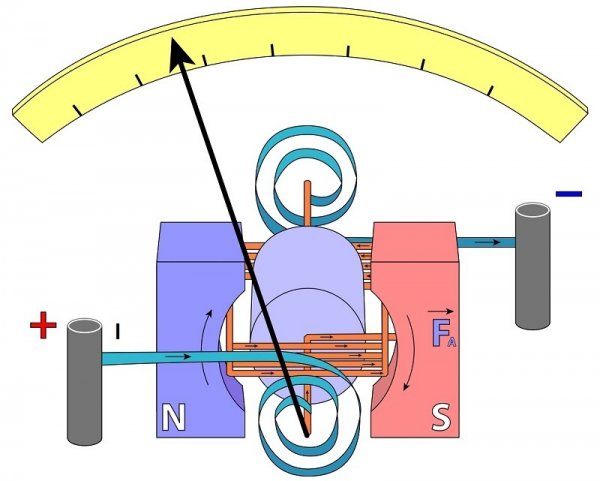Application of Ampere's force action in technology
In 1820, the Danish physicist Hans Christian Oersted made a fundamental discovery: the magnetic needle of a compass is deflected by a wire carrying a direct electric current. Thus, the scientist found in an experiment that the magnetic field of the current is directed exactly perpendicular to the current, and not parallel to it, as might be assumed.
The French physicist Andre-Marie Ampere was so inspired by the demonstration of Oersted's experiment that he decided to continue his research in this direction on his own.
Ampere was able to establish that not only is a magnetic needle deflected by a current-carrying conductor, but two parallel conductors carrying direct currents can either attract or repel each other—depending on which directions they are moving relative to each other the currents in these wires.
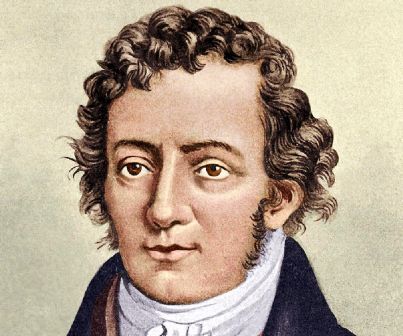
It turned out that an electric current produces a magnetic field, and the magnetic field already acts on another current.Ampere concluded that a current-carrying wire also acts on a permanent magnet (arrow) only because many microscopic currents also flow inside the magnet in closed paths, and in practice, although the magnetic fields interact, the sources of these magnetic fields, the currents, are repelled. There would be no magnetic interaction without currents.
As a result, in the same year 1820, Ampere discovered the law according to which direct electric currents interact. Conductors with currents directed in one direction attract each other, and conductors with oppositely directed currents repel each other (see - Ampere's Law).
As a result of his experimental work, Ampere found that the force acting on a current-carrying wire placed in a magnetic field depends linearly both on the magnitude of the current I in the wire and on the magnitude of the induction B of the magnetic field in which this wire is placed .
Ampere's law can be formulated as follows. The force dF with which the magnetic field acts on a current element dI located in a magnetic field of induction B is directly proportional to the current and the vector product of the length of the conducting element dL by the magnetic induction B.
The direction of Ampere's force can be determined by the left-hand rule. This force is greatest when the wire is perpendicular to the lines of magnetic induction. In principle, the ampere strength for a wire of length L carrying a current I placed in a magnetic field of induction B at an angle alpha to the lines of force of the magnetic field is equal to:
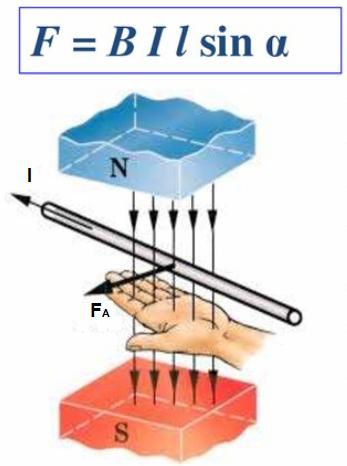
Today, it can be argued that all electrical components in which an electromagnetic action sets an element in mechanical motion use the Ampere's force.
The principle of operation of electromechanical machines is based precisely on this force, nfor example, in an electric motor… At any instant of time, during the operation of the electric motor, part of its rotor winding moves in the magnetic field of the current of part of the stator winding. This is a manifestation of Ampere's force and Ampere's law of the interaction of currents.
This principle is perhaps the most common in electric motors, where electrical energy is thus converted into mechanical energy.
The generator, in principle, is the same electric motor, realizing only the reverse transformation: mechanical energy is converted into electrical energy (see — How do AC and DC generators work?).
In the motor, the rotor winding, through which the current flows, experiences the action of the Ampere force from the stator magnetic field (on which the current with the desired direction also acts at this time) and thus the rotor of the motor enters into a rotational movement, rotation of the shaft with the load.
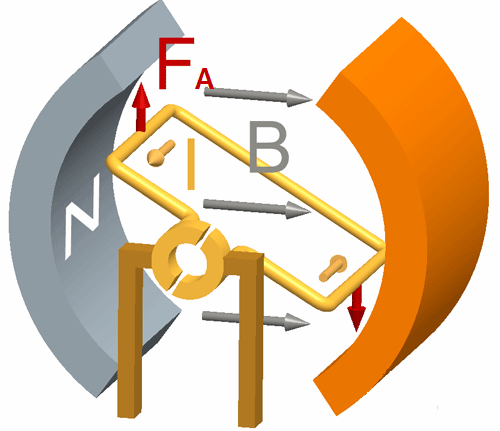
Electric cars, trams, electric trains and other electric vehicles experience wheel rotation thanks to a shaft that rotates under the action of Ampere's force in an AC or DC drive motor. AC and DC motors use amperes.
Electric locks (elevator doors, gates, etc.) work in the same way, in a word - all mechanisms where electromagnetic action leads to mechanical movement.
For example, in a loudspeaker that produces sound in the speakers of a loudspeaker, the membrane vibrates because the current-carrying coil is repelled by the magnetic field of the permanent magnet around which it is installed.Thus sound vibrations are formed — the Amperage is variable (since the current in the coil changes with the frequency of the sound to be reproduced) pushes the diffuser, generating sound.
Electrical measuring instruments of the magnetoelectric system (e.g. analog ammeters) include an installed removable wire frame between the poles of a permanent magnet… The frame is suspended on spiral springs, through which the measured electric current passes through this measuring device, in fact, through the frame.
When the current passes through the frame, the Ampere force, proportional to the magnitude of the given current, acts on it in the magnetic field of a permanent magnet, therefore the frame rotates, deforming the springs. When the Ampere force is balanced by the spring force, the bezel stops rotating and at that point readings can be taken.
An arrow is connected to the frame, pointing to the graduated scale of the measuring device. The angle of deflection of the arrow turns out to be proportional to the total current passed through the frame. The frame usually consists of several turns (see — Ammeter and voltmeter device).

